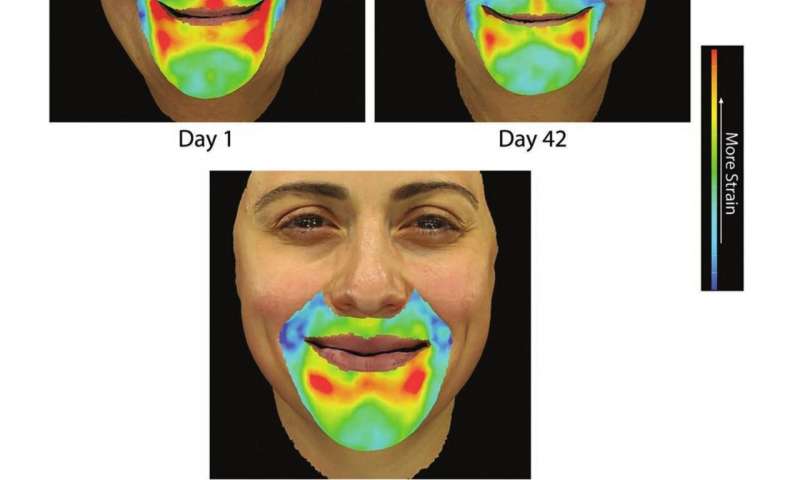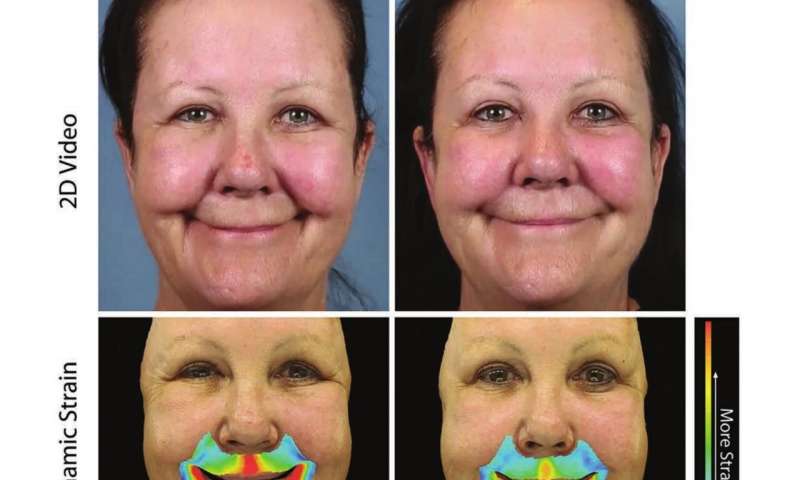Express yourself: Dermal fillers restore youthful facial movement, don’t just fill wrinkles


According to a new study in the February issue of Plastic and Reconstructive Surgery, the official medical journal of the American Society of Plastic Surgeons (ASPS), they also restore a more youthful pattern of facial movement and expressiveness.
Using 3-D digital stereophotogrammetry, the study suggests that hyaluronic acid (HA) dermal filler treatment can restore a more youthful pattern of facial expressiveness. “The strain reduction following filler treatment objectively conveys a dermal tightening effect, likely secondary to the volumization of treated areas,” writes ASPS member Ivona Percec, MD, Ph.D., of University of Pennsylvania, Philadelphia, who led the study.
With further analysis, Dr. Percec and co-authors believe that quantitative dynamic strain analysis could aid in planning and optimizing the outcomes of facial rejuvenation treatments.
Injectable dermal fillers provide a minimally invasive approach to reduce facial lines and wrinkles while restoring volume and fullness in the face. Nearly 2.7 million dermal filler injection procedures were performed in 2018, according to the most recent ASPS statistics.
To be truly effective though, these treatments must do more than just fill out facial lines and sagging—they must also produce a more youthful-appearing pattern of facial movements. “Facial expressions convey emotions as well as signal characteristics such as age and quality of life,” Dr. Percec and colleagues write.

How do dermal fillers affect the face in motion? Using a technique called 3-D digital stereophotogrammetry, Dr. Percec and colleagues obtained precise measurements of facial stretch and compression in 30 women, aged 41 to 65 years. All patients were to undergo HA dermal filler treatment for facial lines and wrinkles in the lower face.
Specifically, the women were treated for moderate to severe nasolabial folds (NLF), the lines running from the corners of the nose to the corners of the mouth; and “marionette lines” (ML), running from to mouth to the chin. The scans were performed first before HA filler treatment, then repeated six weeks later.
The facial dynamic strain results were compared with those in a group of 20 younger (aged 25 to 35), untreated women. In scans performed before dermal filler treatment, heat maps showed significantly higher “stretch profiles” in the NLF and ML areas in the older women, compared to the younger women.
In the follow-up scans after HA treatment, the older women had significant reductions in stretch and strain, across the full range of facial expressions. “That finding provides objective evidence that HA dermal filler treatment of facial lines in middle-aged women results in stretch levels more like those of younger women, in areas prone to the effects of facial aging,” said Dr. Percec.
Source: Read Full Article